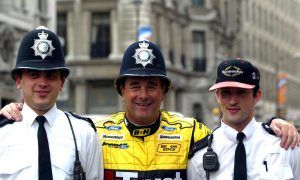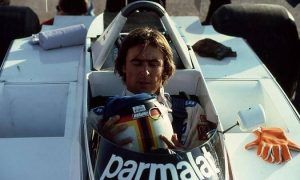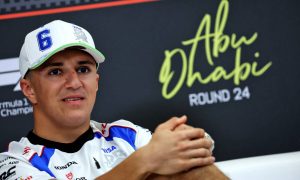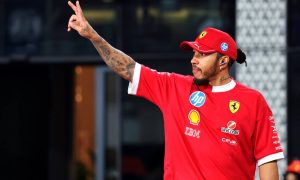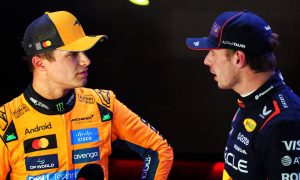
Aston Martin's Fernando Alonso was sanctioned by the Australian GP stewards for “driving in a manner that was potentially dangerous”.
The punishment was part of the officials' investigation into the crash suffered by George Russell's on the penultimate lap of the race while the Mercedes driver was pursuing the Spaniard.
Alonso and Russell were fighting for sixth in the closing stages of the race when the former suddenly changed his approach to Turn 6. Alonso suddenly braked as he entered the complex which drastically reduced the gap between himself and Russell's car.
In a likely case of being deprived of downforce, Russell veered off course into the gravel a hit the wall, the Briton’s severely damaged Mercedes coming to rest in the middle of the track.
Russell wasn’t sure that his rival had purposefully brake tested him on his approach to the corner to gain an advantage, but the stewards viewed the maneuver as suspicious and initiated an investigation, while both drivers were summoned to the stewards’ office.
A one-hour hearing yielded a negative outcome for Alonso who was accused of driving potentially dangerously and in breach of Article 33.4 of the FIA’s sporting regulations.
The Spaniard was hit with a drive-through penalty that was converted after the race into a 20-second time punishment that dropped him in the final standings from P6 to P8, while the Aston charger also collected his first three penalty points on his Superlicence.
"Telemetry shows that Alonso lifted slightly more than 100m earlier than he ever had going into that corner during the race,” read a statement from the stewards.
“He also braked very slightly at a point that he did not usually brake (although the amount of brake was so slight that it was not the main reason for his car slowing) and he downshifted at a point he never usually downshifted. He then upshifted again and accelerated to the corner before lifting again to make the corner.

"Alonso explained that while his plan was to slow earlier, he got it slightly wrong and had to take extra steps to get back up to speed. Nonetheless, this manoeuvre created a considerable and unusual closing speed between the cars.”
However, due to a lack of evidence, the stewards did not know whether Alonso’s erratic move had effectively caused Russell’s crash at the corner.
"Specifically, in this case, the stewards have not considered the consequences of the crash,” they added.
"Further, the stewards considered that they do not have sufficient information to determine whether Alonso's manoeuvre was intended to cause Russell problems, or whether as he stated to the stewards that he simply was trying to get a better exit.
"Should Alonso have the right to try a different approach to the corner? – yes. Should Alonso be responsible for dirty air, that ultimately caused the incident? – no.
"However, did he choose to do something, with whatever intent, that was extraordinary – IE lifting, braking, downshifting and all the other elements of the manoeuvre – over 100m earlier than previously, and much greater than was needed to simply slow earlier for the corner? – yes…
"By his own account of the incident he did, and in the opinion of the stewards by doing these things, he drove in a manner that was at very least "potentially dangerous" given the very high-speed nature of that point of the track."
Keep up to date with all the F1 news via Facebook and Twitter



